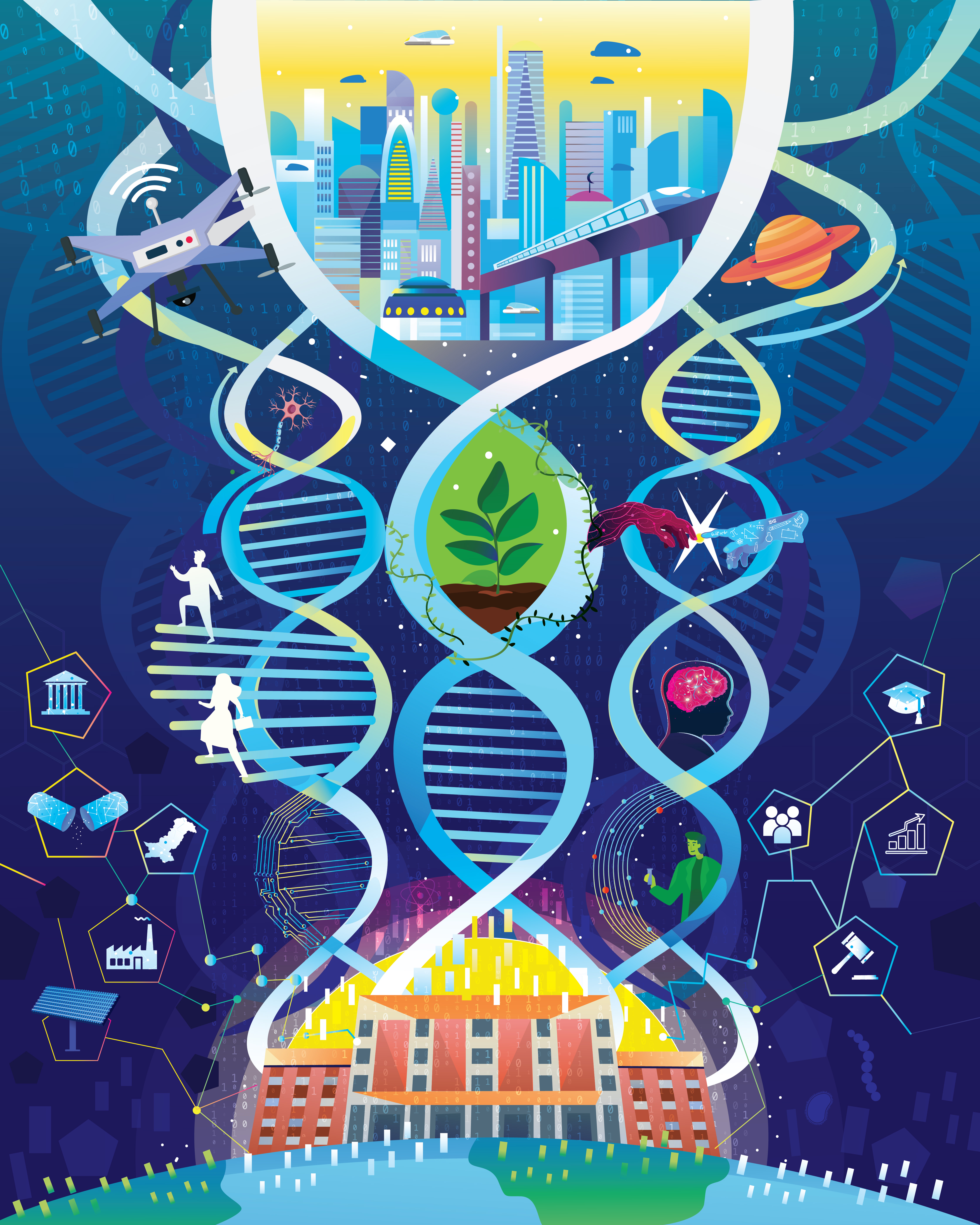No Borders Philosophy

The Syed Babar Ali School of Science and Engineering was envisioned as a ‘no boundaries’ school. Since its inception in 2007, the School has strived to nourish this overarching philosophy both in research and the teaching programs.
The inter-disciplinary focus of research is highlighted by high Faculty from the six departments converging to investigate scientific questions that address diverse themes. The biology and chemistry departments share a strong program in drug discovery requiring input from biological and chemical angles. The biology department supports two computational biologists, trained in fundamental computer science with little or no prior experience in wet biology, though whose work is crucial for the biologists. Half of the physics Faculty comprises electrical engineers. The mix between electrical engineering and computer science is even more conspicuous. Finally, the decision to house chemical engineering within the chemistry department, despite difficulties posed by the Pakistan Engineering Council, highlights our commitment to a progressive and forward looking vision of science and engineering.
These linkages result in joint research projects. Many of these projects aim to solve the grandest challenges our society and the region face. These include challenges in transportation, climate, urbanization, health informatics and disease progression tracking, human-computer interaction, augmented reality, environmental and atmospheric sensing and digital sustainable agriculture. New hires in agriculture, medical physics and bioengineering, biophysics also show our commitment to working at the synapses between functioning units. The seven research streams that we recently identified in a scoping survey from the SSE research groups, highlight deep entrenched interactions and melting of the minds. Many of these directions have culminated in dedicated research centres such as the Centre for Water Informatics, the LUMS Energy Institute and the Technology for People Initiative.
The spirit also spills over into our curriculum and learning expeditions. The newly introduced courses with SCI and ENGG codes such as Introduction to Environmental Science, Bionanotechnology and the several interesting ideas posed for the summer semester indicate fusion in teaching. The electrical and computer science departments cooperate in teaching several courses notably those related to data science and machine learning, physics and engineering share in the teaching of electromagnetics and mathematical modelling, chemistry and biology come together to teach biochemistry and so on. These interactions are rare by Pakistani standards. Our faculty can supervise projects across departments and lots of interactions are enabled that cut across the boundaries of the five Schools at LUMS as well.
The School’s core curriculum allows students to obtain a well rounded training in all basic sciences and engineering. This is quite rare. So for example, a biologist takes two courses in mathematics and every student in the School takes Bio 101---learning about genetics, microbiology and evolution.
Finally, I like to mention that several research facilities in the School are shared, especially in the central labs at SSE. Chemistry and physics came together to propose the establishment of the Centre for Nanoscience and Nanotechnology and the many school-wide committees such as safety, belonging, curriculums foster interactions which transcend boundaries.

